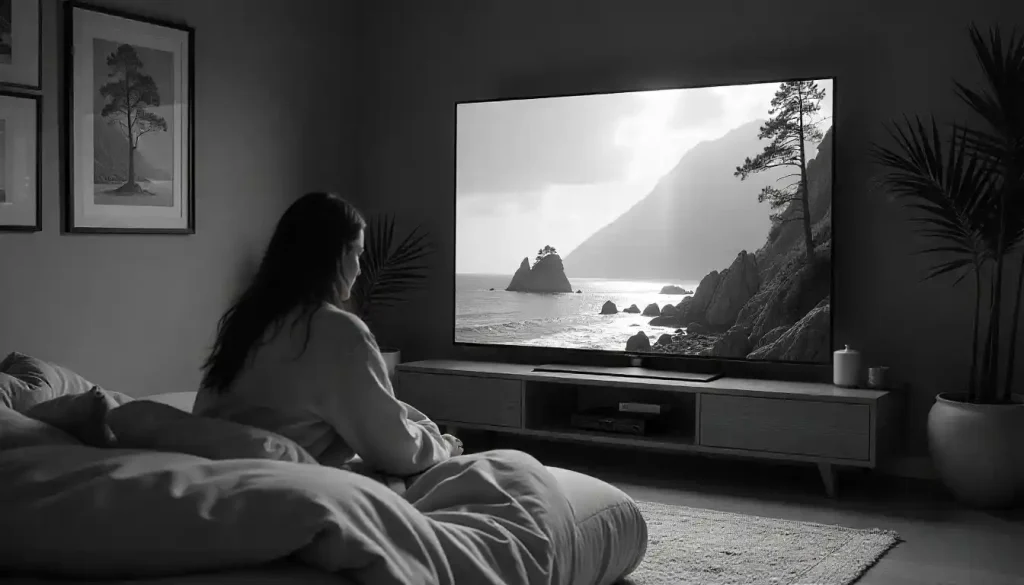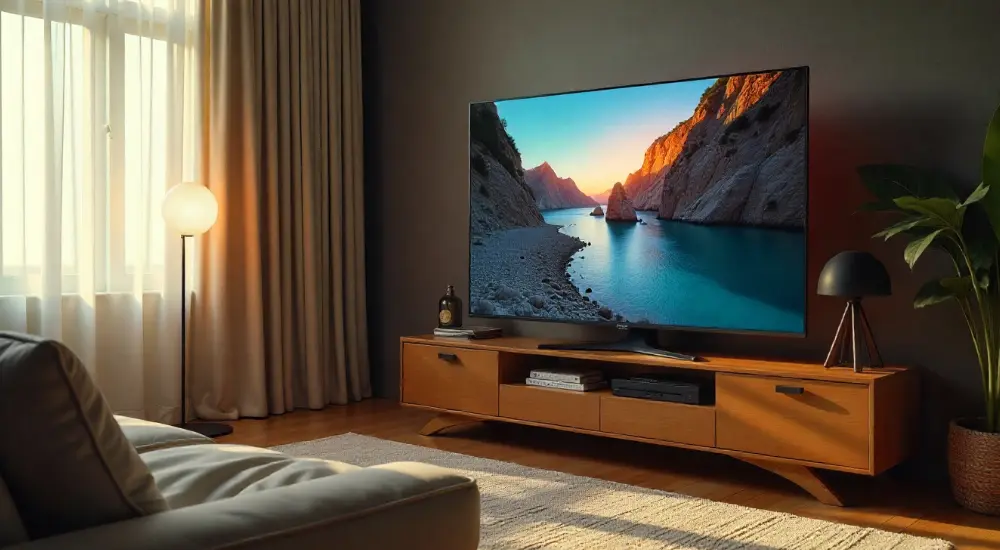The Unavoidable Revolution: Dolby Vision 2 Enters the Fray
The home entertainment landscape is perpetually on the brink of a new revolution.
Just as we settle into one standard, the next one arrives, promising a leap forward in quality and immersion. The latest contender to shake the foundation of our viewing experience is Dolby Vision 2. Recently unveiled by Dolby Laboratories, this isn’t just a simple incremental update. It’s a ambitious reimagining of the high dynamic range (HDR) standard that aims to solve some of the most persistent and frustrating problems in modern television.
However, with great ambition comes great scrutiny, and this new standard is already poised to become the center of heated debate among cinephiles and casual viewers alike. This deep dive will explore what Dolby Vision 2 is, how it promises to change everything, and why it might face an uphill battle for acceptance.
Beyond Brightness: The Core Philosophy of Dolby Vision 2
The original Dolby Vision was a monumental achievement. It focused primarily on delivering superior peak brightness, incredible contrast, and a wider color gamut directly from the creator’s master to the viewer’s screen. It was about fidelity—showing exactly what the filmmaker intended. Dolby Vision 2 expands this philosophy dramatically. It’s no longer just about static image quality. The new standard aims to bridge the perceived gap between the filmmaker’s ideal vision, often realized in a perfectly calibrated grading suite, and the viewer’s practical, imperfect living room environment. It introduces dynamic, intelligent processing to adapt content in real-time, venturing into areas like motion handling that have traditionally been the sole domain of TV manufacturers, often with controversial results.
1. “Content Intelligence”: The AI-Powered Crusade Against Dark Scenes
One of the most universally frustrating experiences for any TV viewer is not being able to see what’s happening on screen. This has been a recurring issue with prestige television, notably the infamously dark “Battle of Winterfell” episode of Game of Thrones and the intentionally murky visuals of Apple TV+’s Silo. The problem often stems from content being color-graded for ideal conditions: a pitch-black room on a top-tier, ultra-bright OLED or high-end LED TV. For the vast majority of viewers with less perfect setups and ambient room light, these scenes become a muddy, indistinguishable mess.
Dolby Vision 2’s answer is a feature called Content Intelligence. This isn’t just simple tone mapping. Dolby claims it uses new “AI capabilities” to analyze the content itself. Televisions equipped with external ambient light sensors will work in tandem with this AI to dynamically adjust the picture. The goal is to deliver “crystal clear” clarity in any viewing environment while still, crucially, “not compromising the creator’s intent.” In theory, this could eliminate the need to constantly adjust settings between a brightly lit daytime viewing session and a dark, cinematic nighttime one. The TV would intelligently manage brightness and contrast to preserve detail in shadows and highlights, regardless of your room’s lighting.
2. “Authentic Motion”: Dolby’s Bold Plunge into the Soap Opera Effect Debate
If Content Intelligence is poised to be a hero, the Authentic Motion feature is destined to be the most controversial villain—or savior, depending on your perspective. For years, the “soap opera effect” (officially known as motion interpolation or motion smoothing) has been the most divisive feature in television. Enabled by default on most sets, it works by generating artificial frames to smooth out the natural judder of 24fps content, making it look like a high-frame-rate video.
Serious film fans and renowned directors like Christopher Nolan and Rian Johnson detest it, arguing it destroys the intended cinematic texture and introduces unsightly artifacts. Many casual viewers, however, prefer the hyper-real smoothness. Dolby’s solution is to give the power back to the creators. Authentic Motion is touted as “the world’s first creative-driven motion control tool.” The idea is that filmmakers can embed metadata into the content itself, dictating on a shot-by-shot basis how much motion smoothing, if any, should be applied. A chaotic action sequence might get a slight smoothing treatment to enhance clarity, while a quiet dramatic scene would remain in its native juddery, filmic state.

3. The Two-Tiered Strategy: Dolby Vision 2 vs. Dolby Vision 2 Max
In a strategic move to ensure widespread adoption, Dolby is launching the standard in two distinct tiers. The base Dolby Vision 2 will be compatible with low to mid-range televisions, bringing its core AI enhancements to a broader market. The premium tier, Dolby Vision 2 Max, is reserved for high-end TVs, presumably unlocking the full potential of the features, including more advanced processing and higher specifications for brightness and color. While this democratizes access, the lack of detailed public specifications distinguishing the two tiers is puzzling. It risks creating consumer confusion and could lead to a scenario where the experience varies so dramatically between tiers that the “Dolby Vision 2” name itself loses consistent meaning.

The Inevitable Backlash: Why Dolby Vision 2 Will Face Heated Disagreements
Despite its promising features, Dolby Vision 2 is not arriving to universal applause. It is actively stepping into a minefield of purist preferences. The fundamental principle of the original Dolby Vision was to show the creator’s exact intent without alteration. Dolby Vision 2, by its very nature, is about intelligent alteration.
The notion of an AI modifying the image, even with the goal of preserving intent, will be anathema to videophiles who have spent thousands on a perfectly calibrated system designed for a controlled environment. Any processing, no matter how intelligent, introduces the possibility of error, artifacts, and a departure from the original master. This philosophical shift from “absolute fidelity” to “adaptive fidelity” is the core of the coming disagreement.
The Motion Morass: Can “Authentic Motion” Truly Please Anyone?
The Authentic Motion feature is arguably the biggest gamble. While the intention of creator control is noble, its execution is fraught with challenges. Will directors and colorists actually want to spend significant extra time and budget meticulously tagging every shot for motion processing? For major studio films, perhaps. For fast-turnaround television shows? Unlikely.
This could lead to inconsistent application, making the feature more of a gimmick than a standard. Furthermore, it does nothing to address the current hatred for motion smoothing; it merely changes who controls it. Viewers who currently hate the effect will likely disable the entire feature, rendering it useless, while those who love it may be frustrated when a director chooses to disable it for their favorite show.
The Waiting Game: What We Need to See at CES
Currently, Dolby Vision 2 exists mostly as a compelling press release. The true test will be a real-world, side-by-side demonstration. The industry and consumers alike will be watching January’s Consumer Electronics Show (CES) with intense interest. Key questions remain unanswered. How effective is Content Intelligence at combating artifacts while lifting shadows? Does Authentic Motion genuinely look different from the much-maligned soap opera effect? The early adoption by Hisense for hardware and CANAL+ for content is a start, but without concrete launch dates and transparent technical details, Dolby Vision 2 remains a spectacular promise waiting to be proven. The revolution is coming, but its success depends entirely on execution.

Table of Contents
Reference Website:
https://arstechnica.com/gadgets/2025/09/the-new-dolby-vision-2-hdr-standard-is-probably-going-to-be-controversial/